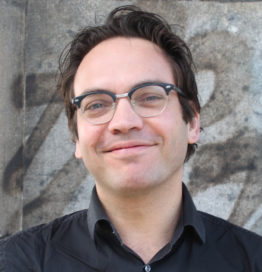
Partner och senior rådgivare, Stipo
How to develop great places….and keep them that way – The important aspects of how to develop great places. Public development, placemaking and creating a great city at eye level. Who do we need to involve. How do we keep them involved. What kind of investments are needed. And how do we create value and combine short term gain and long term benefit.
Jeroen Laven är partner och senior rådgivare vid Stipo. Jeroen har arbetat strategiskt och suttit i ledningsfunktioner för staden Rotterdam samt arbetat för den Nederländska regeringen i närmare 15 år. Sedan 2008 är Jeroen partner vid Stipo. Innovation, processledning och medskapande är nyckelbegrepp på Stipo. De senaste åren har Stipo genomfört ett antal olika utvecklingsprojekt i offentliga miljöer och publicerat boken ”the City at Eye Level” vilket har lett till ett antal olika aktiviteter i Skandinavien. På Stockholmskontoret är Jeroen en del av ledningen och arbetar med en mängd olika aktiviter i Stockholmsregionen.
Föreläsningen är på engelska.
You have an anthropological approach to cities, can you further describe what it means and how it affects the way you are working with city development?
“STIPO” stands for Strategy, Innovation, Process development and Open-source. STIPO started at the University of Amsterdam in 1992. Our core values are long lasting quality, soul of the city, variation of functions, ownership of citizens and public quality. We are based in Rotterdam, Amsterdam, Stockholm and Thessaloniki and have extensive experience in international exchange settings. STIPO works for cities, housing providers, regions, ministries, NGOs, private developers, knowledge and innovation centres, international networks and universities.
We approach the city as a whole with connecting spatial, social, economic, and cultural components. We work in collaborative networks, involving partners and co-makers from both the ‘planned city’ and the ‘lived city’. We bring knowledge and action together.
As a public developer we make ourselves co-responsible to bring these ideas from the strategic level to implementation, always with the co-makers we involve in the projects. We make sure that the co-makers we involve get into position to take the next steps to implemenation. This varies from visions at a local or regional level, where we often work together with a 100 stakeholders to make it a vision of the planned and lived to world, to projects on a smaller scale, like the redevelopment of the ZOHO area in Rotterdam.
You mean that public space is the backbone of a sustainable city. In what way?
Public space quality is the backbone of a sustainable city. Great streets, places where you intuitively want to stay longer, human scale interaction between buildings and streets, ownership by users, placemaking and good plinths (active ground floors) and a people-centred approach based on the user’s experience,
In our work with the City at Eye Level we turn streets, plazas and areas into places where people feel at home and want to stay (placemaking). We let buildings contribute to the quality of public space with their ground floors (plinths). With the communities, we set up strategies for cities, areas, streets and plazas. Our method combines use, design and organisation (software, hardware and orgware). We work on the level of the building, the street and the context. We are aimed at improving the city at eye level and at creating a public space with human scale, interaction and human experience.
On www.thecityateyelevel.com you can download many examples of the projects we, and our network, work on.